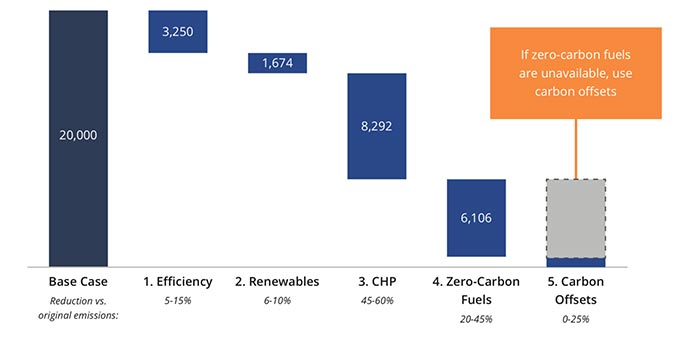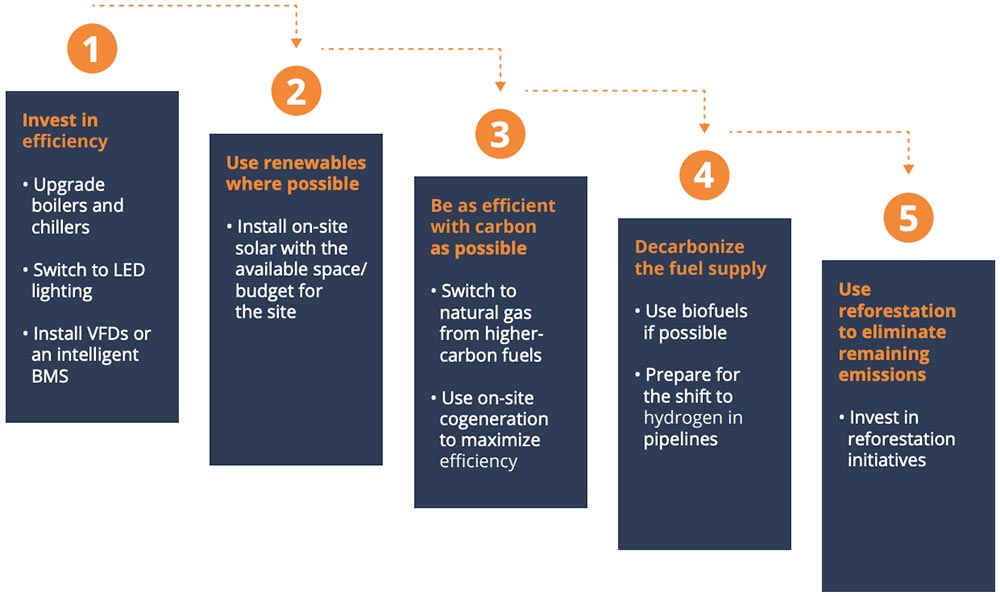The Path To Carbon Neutral – Five Steps to Cut Facility Emissions

You have more control over your emissions than you think. The five-step path to carbon neutral includes these on-site measures, including a microgrid.
In order to keep global warming below 1.5° and prevent the most drastic impacts of a changing climate, the Intergovernmental Panel on Climate Change (IPCC) recommends a target of carbon neutrality by 2050. Many facilities have pledged to reduce or eliminate carbon emissions, but not all have an effective or realistic strategy for achieving that goal.
As discussed in “The Path to Carbon Neutral: The Need for an On-Site Solution,” the grid will not be carbon neutral in the next 20 years. The limitations of solar and wind technology make a 100% shift difficult to achieve — but we cannot afford to wait. Facilities have a responsibility to begin with their own sites, today.
The good news is that there is a path forward. Facilities can leverage existing solutions while looking ahead to future innovations, by following this five-step Path to Carbon Neutral. Importantly, these steps can be self-funding and do not require a large capital outlay.
The following graphs provide examples of how a Maryland hospital that emits 20,000 metric tons of CO₂ per year and a California industrial facility that emits 30,000 metric tons of CO₂ per year can each achieve carbon neutrality by following these steps.
Path to Carbon Neutral: Five-Step Plan
The Five Steps to Carbon Neutral
1. Invest in Efficiency
Any path to carbon-neutral should begin with reducing energy consumption by investing in highly efficient equipment and energy management technologies. Many sites are running on aging equipment with declining efficiency, including boilers, chillers, and cooling towers. The EPA states that almost half of large boilers in the U.S. are at least 40 years old — in fact, Unison Energy has seen clients with boilers from the 1960s. In some cases, this aged equipment does not meet the EPA’s MACT or Area Source Rule emission standards. But upgrades do pay off: a hospital that installs new boilers can reduce gas usage by up to 15% and cut down on recurring maintenance costs for old equipment.
In addition, facilities that have not yet integrated LEDs, auto-dimming lights, variable frequency drives, or an intelligent building management system are missing an opportunity. The EPA estimates that these kinds of on-site efficiency measures can reduce a facility’s energy consumption by up to 20%, while a typical LED payback period can be as short as one year. In fact, the EIA estimates that commercial lighting went from 38% of total U.S. electricity consumption in 2003 to just 17% in 2012, thanks to widespread lighting upgrades. For those that are still relying on outdated infrastructure, building upgrades are a cost-effective first step toward improving efficiency.

2. Use Renewables Where Possible
It makes sense to implement on-site renewable solutions like rooftop solar whenever possible, as these clean and increasingly inexpensive technologies deliver real emission cuts, especially during daily usage peaks when utilities ramp up the most inefficient marginal generation. Installing solar panels on parking lots, rooftops, and even nearby land can provide 10-20% emission reductions, depending on space availability. NREL estimates that solar requires about 8.1 acres or 352,836 sq/ft per MW of capacity.
That being said, facilities that have already installed solar know that renewables are not a feasible on-site solution for powering 100% of a site’s energy usage. Solar panels require sunlight, which means they do not generate power overnight or on cloudy days. Battery solutions can store excess solar energy for later use, but the batteries needed to do so on a commercial and industrial-scale are large and expensive. To power, a facility with 1 MW of baseload demand year-round would require at least 8 MW of solar and 30 MWh of storage in order to adequately meet the demand during nights and days with little solar production. Solar and storage system sizing would vary slightly in different locations but multi-day stretches of cloudy days or rain do occur in even the sunniest locales.
In addition, renewables do not cover 30% of a typical site’s carbon emissions from thermal loads such as running hot water and steam boilers. Electrifying thermal loads (including hot water, steam, and chilled water) is an option but is either prohibitively expensive or technically infeasible for commercial and industrial facilities.
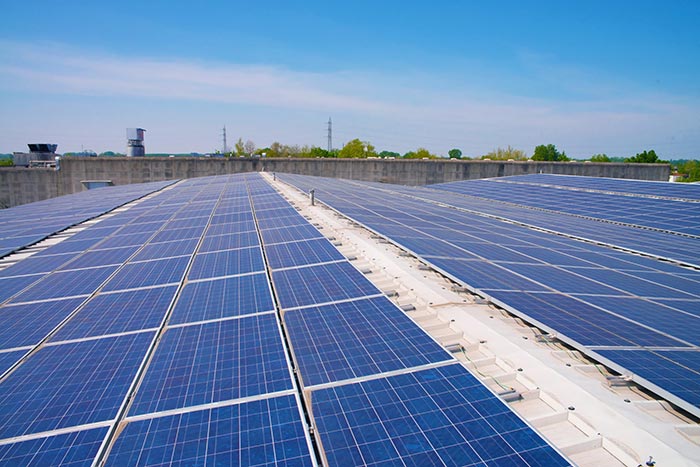
3. Be as Efficient with Carbon as Possible
On-site natural gas generation, using cogeneration or combined heat and power (CHP) technology, offers increased efficiency and significantly lower emissions compared with existing utility usage. Depending on facility type and the state’s fuel mix, cogeneration can reduce a site’s carbon footprint by 20-60%. Facilities will see an especially high impact if they have substantial hot water or steam usage, or if they are located in a state where coal plants provide a significant proportion of energy generation. The EPA estimates that a site can achieve 60-80% system efficiency with the on-site use of natural gas for cogeneration, where one fuel source produces both thermal and electrical energy. In comparison, grid electric generation offers about 38% system efficiency.
Facilities may initially plan to steer clear of fossil fuels, but the fact remains that without the space for a large solar field and the capital for a large battery storage system, renewables cannot cover the full site load and will remain partially dependent on grid power. In addition, facilities will have to use natural gas well into the future unless they invest in switching boilers to electric heat, which is costly and inefficient. Cogeneration can reduce a site’s carbon footprint across both electric and gas end uses, today.
Furthermore, relying on utility power alone leaves a facility vulnerable to outages. A microgrid using on-site natural gas generation to cover baseload demands ensures business continuity if and when grid outages occur as an added benefit. Even if outages last for days, the cogeneration system can support the facility’s load as long as natural gas continues to run through the pipelines (which are typically protected underground and considered uninterruptible).
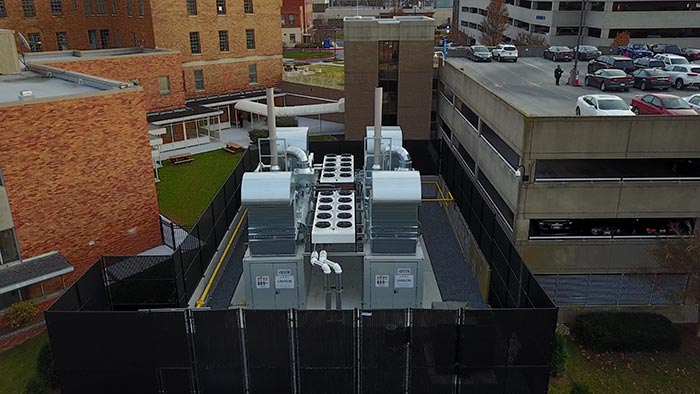
4. Decarbonize the Fuel Supply
A facility that invests in an on-site, natural-gas-powered cogeneration system is investing in an energy solution that will last for 20+ years. But it is worthwhile to recognize that these systems are part of a pathway to deep decarbonization as technology and supply chains evolve to incorporate biogas and hydrogen as fuel sources.
Biogas is the carbon-neutral methane created from the organic matter at dairy farms, waste treatment plants, and food processing facilities. Biogas can be mixed with natural gas or replace altogether. Many utilities have already set up purchase options for consumers who want biogas injected into the pipeline. For instance, Vermont Gas states that its biogas option can reduce a customer’s carbon emissions by up to 23%.
The hydrogen economy is often in the news as a potential vision of a low-carbon future. Hydrogen can be used directly to power an on-site engine or blended with natural gas in the pipeline. The Hydrogen Council suggests hydrogen could support 18% of energy demand worldwide while cutting about 20% of carbon emissions.
One hurdle for relying on hydrogen as a low-emissions fuel is that hydrogen is typically produced from fossil fuels through a steam methane reforming process that emits CO₂. However, hydrogen producers are gearing up to green the process by using wind and solar to run electrolysis, which eliminates emissions. The momentum is there — Wood Mackenzie Power & Renewables has identified 3.2 GW of investment in new green hydrogen projects, which is set to grow over the next decade.
Meanwhile, injecting hydrogen into the natural gas pipelines has already been piloted in Europe and is being promoted by the IEA and others. NREL estimates that hydrogen blend levels in natural gas pipelines could be as high as 5-20% while requiring no or minor modifications for end-user systems, whether household boilers and stoves or industrial processes and power generation.
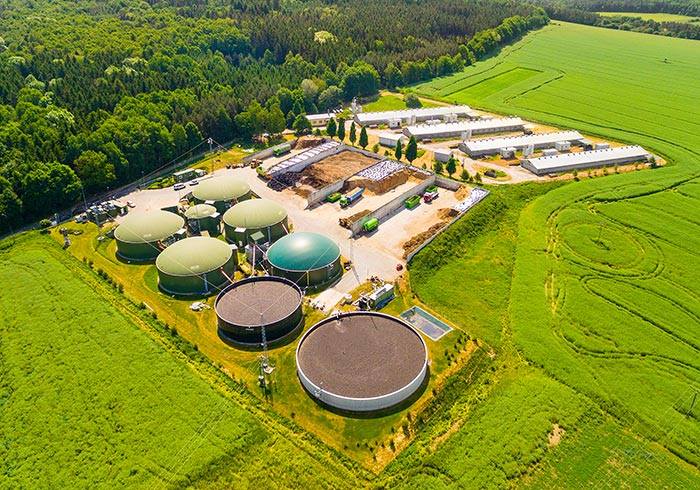
5. Use Reforestation to Eliminate Remaining Emissions
After implementing the previous steps, facilities can easily eliminate their remaining carbon emissions through reforestation programs like the Trillion Trees initiative, which actively removes carbon dioxide from the air through natural processes.
Unison Energy chooses to work with reforestation partners rather than purchasing renewable energy credits because trees actively remove carbon from the atmosphere through photosynthesis, allowing sites to potentially achieve net negative emissions, as Microsoft has chosen to do. Pricing for this varies but can be cost neutral thanks to the savings from other steps in the Path to Carbon Neutral.

Unison Energy and Zero Carbon
At Unison Energy, we are not waiting for the utility grid to reach carbon neutrality. We provide on-site energy solutions to reach zero carbon first by reducing your facility’s carbon footprint by over 50% today and the remainder through reforestation investments.
Unison Energy installs, owns, and operates highly efficient microgrids that can combine a mix of onsite generation technologies, including solar, battery storage, and cogeneration systems. Our cogeneration systems can be retrofitted to integrate with low-carbon fuels as they become available. The significant cost savings from microgrids can be used to fund additional investments, including upgrades to the client’s central utility plant or reforestation investments. With these measures, our customers can reach carbon neutrality today.
Interested in getting your facility started on the road to zero carbon? Click here to contact Unison Energy.
Energy insights, delivered
Subscribe for more content.
Related Blogs
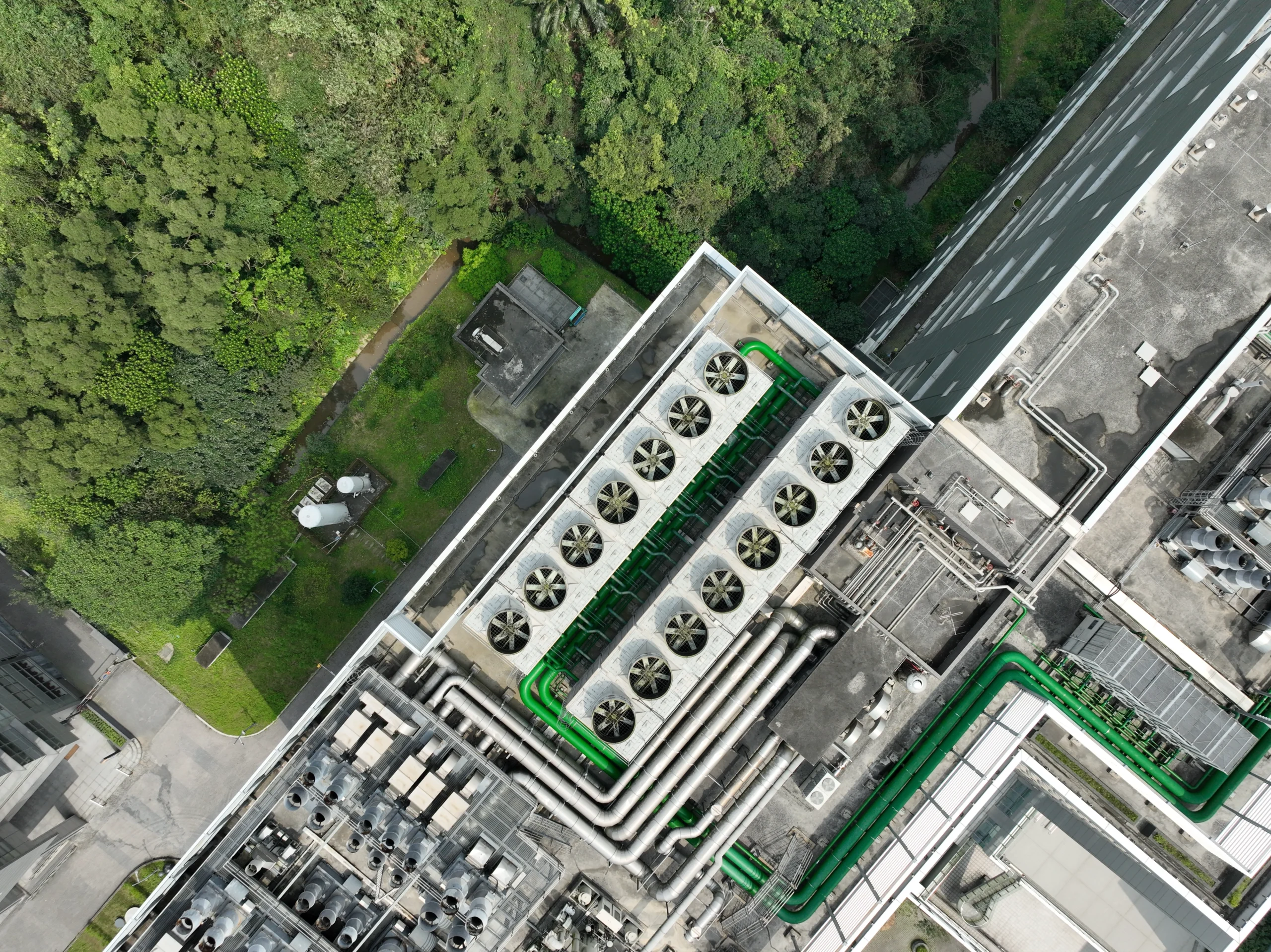
Policy Whiplash: Why Data Centers Must Take Control of Their Power Now
Deadlines for the Inflation Reduction Act
Canadian Carbon Reduction Incentives: What You Should Know
